| LABELS | CLASS | SUBSTANCES | EXAMPLES/ UN No. |
|---|---|---|---|
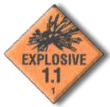
|
1.1 | Substances & Articles which have a mass explosion hazard | UN 0076 Dinitrophenol 1.1D |
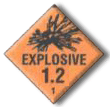
|
1.2 | Substances & Articles which have a projection hazard but not a mass explosion hazard. | UN 0328 Cartridges for weapons, inert projectile 1.2C |
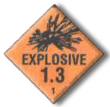
|
1.3 | Substances & Articles which have a fire hazard and either a minor blast hazard or a minor projection hazard or both, but not a mass explosion hazard. | UN 0247 Ammunition, incendiary 1.3J |
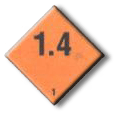
|
1.4 | Substances & Articles which present no significant hazard. | UN 0337 Fireworks 1.4S (Pyrotechnic articles designed for entertainment) |
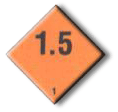
|
1.5 | Very insensitive substances which have a mass explosion hazard. | UN 0482 Substances, explosive, very insensitive 1.5D |
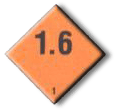
|
1.6 | Extremely insensitive articles which do not have a mass explosion hazard. | UN 0486 Articles, explosive, extremely insensitive 1.6N |
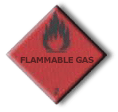
|
2.1 | Flammable gases | UN 1001 Acetylene, dissolved Heating will cause a pressure rise with risk of bursting, explosion and fire. |
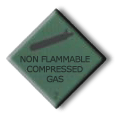
|
2.2 | Non-flammable, non-toxic gases | UN 1066 Nitrogen, compressed Heating will cause a pressure rise with the risk of bursting. |
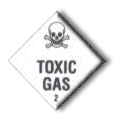
|
2.3 | Toxic gasses | UN1017 Chlorine Heating will cause a pressure rise with risk of bursting and toxic. |
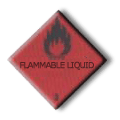
|
3.1
3.2 3.3 |
Flammable liquids, division into groups according to flashpoint from -18° to +61° C. |
3.1 1090 Acetone Flp. = .20°C
3.2 1294 Toluene Flp. = +7°C 3.3 1263 Paint Flp. = +32°C Risk of fire and explosion by escape from gases |
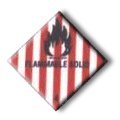
|
4.1 | Flammable Solids | UN 1338 Phosphorus, Red risk of fire. |
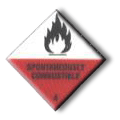
|
4.2 | Spontaneously combustible | UN1384 Sodium Dithionite Risk of fire. React violently in contact with water |
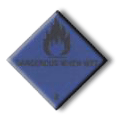
|
4.3 | Dangerous when wet | UN1402 Calcium carbide. React violently in contact with water |
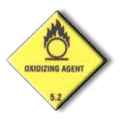
|
5.1 | Oxidizing substances | UN 1456 Calcium Permanganate. Substances promote combustion |
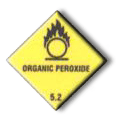
|
5.2 | Organic peroxides | UN3106 Organic peroxide, Type D, solid Dibenzoyl Peroxide, Risk of explosion and fire ; protection for intensive warming, shock and friction. |
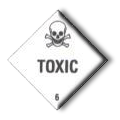
|
6.1 | Toxic substances | UN1547 Aniline. Toxic if swallowed, by skin contact or by inhalation. |
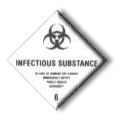
|
6.2 | Infectious substances | UN3291 Clinical waste, unspecified, high community risk are micro organisms that cause severe human or animal disease. |
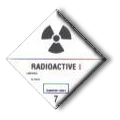
|
7 | Radioactive materials, cat. I | UN2981 Uranyl Nitrate, solid Schedule 5 |
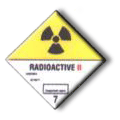
|
7 | Radioactive materials, cat. II | UN 2976 Thorium Nitrate, solid Schedule 6 |
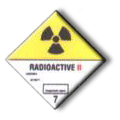
|
7 | Radioactive materials, cat. III | UN2979 Uranium Metal, pyrophoric Schedule 10 |
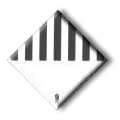
|
8 | Substances & Articles which have a mass explosion hazard | UN 1779 Formic Acid. Contact with a relatively small quantity of water creates violent reaction and other dangerous substances |
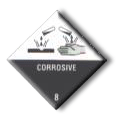
|
9 | Miscellaneous dangerous substances and articles | UN 2211 Polymeric Beads, expandable; Risk of fire. Inhalation of harmful substances. In risk of fire formation of extreme toxic or water pollutant. |

|
Marine Pollutant , MP | Marine pollutants are regulated of the requirements by IMO. The marine pollutant mark should be placed adjacent of the dangerous goods label. | |

|
Fumigation warning sign | Marking of units which are carried under fumigation. Warning signs are fitted on the container door. Do not enter this cargo unit. |
© Transworld GLS